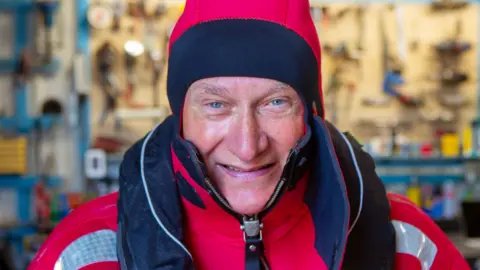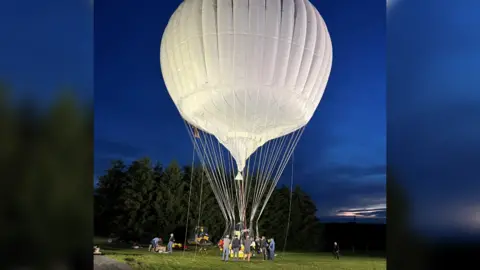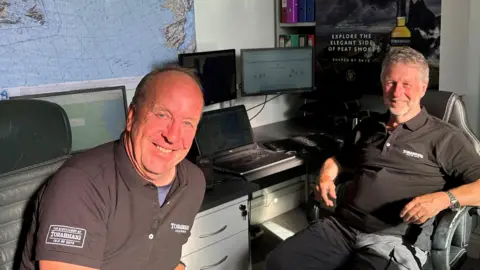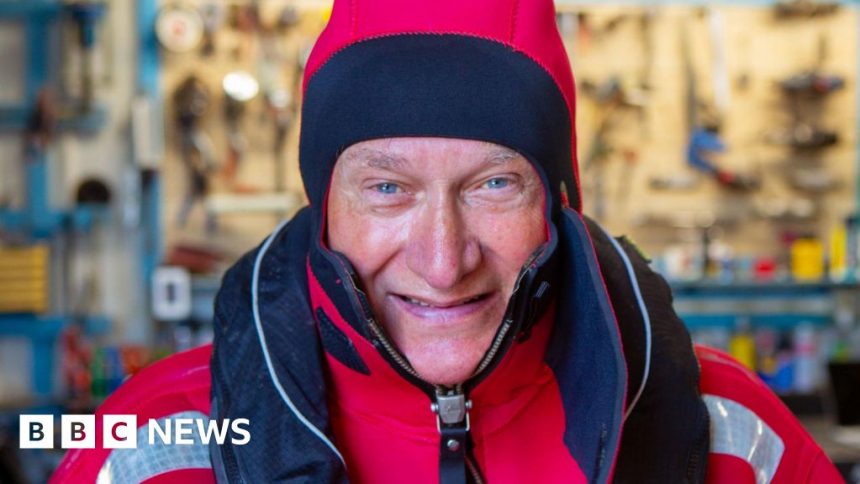Attempt to fly open basket-balloon across Atlantic abandoned
 PA
PAA group of explorers hoping to be the first to fly across the Atlantic in an open basket hydrogen balloon have said they are “extremely disappointed” after the attempt had to be abandoned.
British explorer Sir David Hempleman-Adams, 67, who lives in Wiltshire, and two friends took off from Presque Isle, Maine, in North America, just after 02:30 UTC [03:30 BST].
But after about seven hours in the air, the crew were forced to land, at 09:40 UTC [10:40 BST] near New Brunswick, Canada, due to weather conditions.
A spokeswoman for the crew, who are safe and well, said: “They will attempt it again but it’s too early to say when at the moment.”
She added: “It was a very difficult decision and they are obviously extremely disappointed but safety is obviously paramount.”
The attempt by the Torabhaig Atlantic Explorer crew was being monitored by Flight Control in Bristol.
The spokeswoman said that the conditions had required an altitude higher than planned, and that would have needed “increased ballast consumption”.
The crew therefore decided to land the balloon having decided they would not have had enough ballast to make it to Europe.
 Torabhaig Atlantic Explorer
Torabhaig Atlantic Explorer Prior to the attempt, Sir David said: “At 67, I’m still young enough to take on a daring hydrogen balloon flight across the Atlantic.
“Age is just a number and the spirit of exploration never fades.”
Sir David has already crossed the Atlantic twice in an open-basket balloon, but this was the first attempt at crossing the Atlantic ocean using a hydrogen balloon.
He was accompanied by American balloon manufacturer Bert Padelt and Swedish explorer, scientist and entrepreneur Dr Frederik Paulsen.
The attempt was also postponed last year due to bad weather.
Sir David had said: “My previous two Atlantic flights have been solo and my companions for this trip have no idea how loudly I snore.
“May the weather be with us this time as everything else is planned for and ready.”
 Torabhaig Atlantic Explorer
Torabhaig Atlantic ExplorerThe highest level the team flew was at 10,000 ft (2,048 metres) and about 125 nautical miles in distance.
They intended to conduct experiments during the journey, with one study aiming to find out how particles from forest fires travel through the atmosphere affecting conditions such as asthma.
Clive Bailey, from Bailey Balloons, was at the Bristol base monitoring progress.
He said: “An amazing amount of work took place for over eight hours preparing the balloon for launch, with a tanker used to fill the balloon with hydrogen, while the team sorted all the technical equipment.
“The Flight Control Team have been up all night ensuring the safety of the balloon and crew while tracking progress.”
Follow BBC Wiltshire on Facebook, X and Instagram. Send your story ideas to us on email or via WhatsApp on 0800 313 4630.







